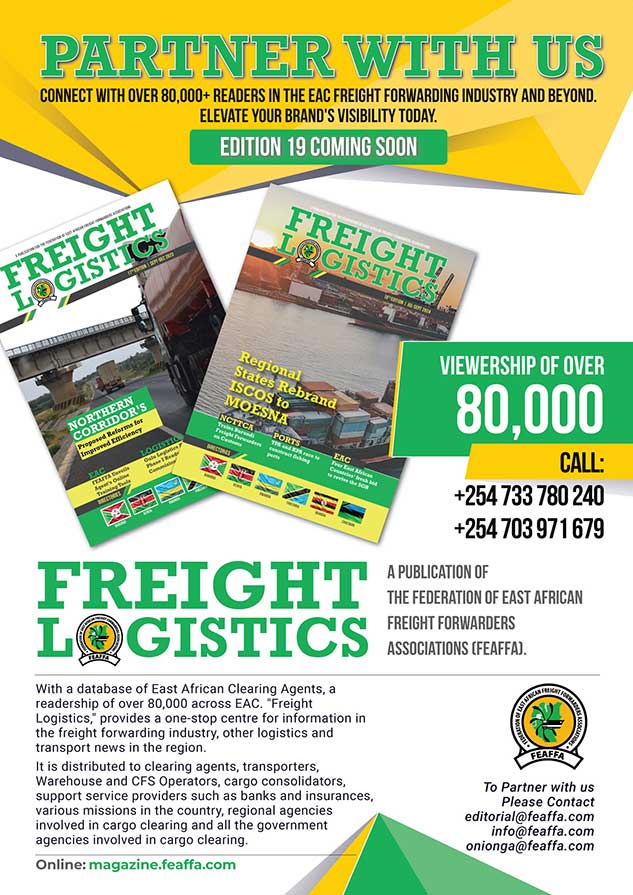Once synonymous with congestion, inefficiency, and costly delays, Tanzania’s Dar es Salaam Port has made a remarkable turnaround, rapidly emerging as a serious contender in the regional logistics arena. With reforms driven by President Samia Suluhu Hassan’s administration, Dar has repositioned itself as a strategic trade gateway for East and Central Africa. But as Kenya intensifies its own efforts—leveraging superior hinterland infrastructure—Tanzania is under pressure to extend its progress beyond the port gates.
For years, Dar es Salaam was used reluctantly by international traders, who often preferred the port of Mombasa in Kenya due to its reliability and better inland connections. However, bold reforms led by the Tanzania Ports Authority (TPA), including the implementation of the Dar es Salaam Maritime Gateway Project (DMGP), the Tanzania Electronic Single Window System (TeSWS), and an upgraded customs system (TANCIS Gen 5), have helped streamline port operations, enhance efficiency, and digitize key processes.
“Under the capable leadership of President Samia Suluhu Hassan, Tanzania is strengthening trade infrastructure and revitalizing its global trade role,” said TPA Director General Plasduce Mbossa during the recent signing of a Memorandum of Understanding between DP World, CMST, and Henry Bath in Dar es Salaam.
This strategic deal marks a turning point, particularly in the mineral logistics sector. The partnership positions Dar as the preferred access point for copper and cobalt from the DRC and Zambia—critical minerals essential to the global energy transition. Improved port services have brought significant gains: vessel waiting times have dropped from 30 days to nearly zero, cargo turnaround times have been slashed to just 36–48 hours, and operating costs have halved. Monthly throughput at Terminal 1 has surged to over 20,000 TEUs, tripling historical levels.
Between May and November 2024, cargo from Zambia and the DRC grew by over 19%, signaling increased confidence in Tanzania’s logistics capabilities. Imports such as fuel, medical supplies, and machinery are also arriving faster and more cost-effectively, improving the business environment.
Yet, the challenge now lies inland. Unlike Kenya, whose Mombasa port enjoys robust hinterland connectivity—through the Standard Gauge Railway (SGR), seamless road links, and efficient inland container depots—Tanzania’s inland logistics remain a bottleneck. Key trade corridors to Mbeya, Kigoma, and Tunduma still suffer from inefficiencies, underdeveloped rail links, and sluggish customs processes.
The superior integration of port and inland infrastructure in Kenya gives Mombasa an edge in serving not only Uganda, South Sudan, and Rwanda, but increasingly eyeing the copper belt markets.
Tanzania’s recent gains at the port risk being undercut if equivalent investment and reforms aren’t matched inland. Logistics experts warn that sustained growth requires synchronized upgrades along the entire trade corridor—from port to border. Customs procedures at inland checkpoints must be digitized, the central and western railway networks modernized, and inter-agency collaboration enhanced to ensure swift cargo transit.
The opportunity is vast. With the global pivot toward green energy and the soaring demand for critical minerals, Tanzania is well placed to become a major logistics and warehousing hub. But competition from Kenya is intensifying. To stay ahead, Tanzania must double down on innovation, expand public-private partnerships, and align port efficiency with hinterland performance.
Dar es Salaam’s transformation is real—but the battle for regional dominance is just beginning.
This article was published by Githua Kihara, an editorial consultant for FEAFFA’s Freight Logistics Magazine. For any inquiries, please contact us via email at editorial@feaffa.com or freightlogistics@feaffa.com, or reach out to Andrew Onionga directly at onionga@feaffa.com / +254733780240.





